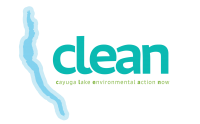Stand Up for Cayuga Lake!
Current status of Cargill Incorporated’s Permit Application for the Cayuga Salt Mine
Cargill Incorporated has submitted a permit application (0-9999-00075/00001) to renew and modify its Mined Land Reclamation Permit for the Cayuga Salt Mine, which includes plans to flood the abandoned S3 Zone of the mine beneath Cayuga Lake with wastewater, potentially impacting the environment and the community. The New York State Department of Environmental Conservation (DEC) has declared itself the lead agency under the State Environmental Quality Review Act (SEQR) and issued a Negative Declaration despite the application being classified as a Type I action, which typically requires a more thorough environmental review.
*Significant concerns have been raised regarding the adequacy of Cargill’s application, including compliance with the Mined Land Reclamation Law, monitoring and treatment of waste materials, the potential for groundwater pollution, the stability of the mine, and the long-term reclamation of the affected areas;
*The proposed flooding of the S3 Zone raises serious questions about the safety and environmental integrity of Cayuga Lake, particularly in light of prior instability noted in this area and the implications of storing not-fully-saturated brine beneath the lake;
*Various stakeholders, including environmental groups and local officials, have expressed concerns regarding the potential adverse impacts of Cargill’s proposed activities, highlighting the need for a more comprehensive environmental impact statement and public engagement;
CLEAN is waiting for a decision by the DEC and hopes the Negative Declaration of Environmental Impact will be rescinded and a public hearing will be held.
CLEAN is conducting a survey of drilled wells on the West Shore of Cayuga Lake that are located within 1.5 miles of the S3 portion of the Cargill Salt Mine
If you own a well that meets this description please consider filling out our survey. Please find a link to the survey HERE
Help Cayuga Lake Environmental Action Now protect Cayuga Lake. Your gift will go to continuing our fight to stop industrial polluters and hold them accountable to safeguard Cayuga Lake. The lake needs us and we need you. The Chris Dennis Environment Foundation(CDEF) is our fiscal sponsor and your gift to CDEF is tax-deductible. Click here to see the most efficient way to donate to CDEF.
See our recent Letter to Gov Hochul HERE
In the heart of upstate NY lies 11 lakes called the Finger Lakes. The lakes are long, narrow, and oriented in the north–south direction. Carved out by glaciers around two million years ago, these lakes are now the home of over 1.2 million people and boasts a thriving economy in the wine and craft beer industries. Cayuga Lake, the second largest of the Finger Lakes, is about 40 miles long and reaches a depth of approximately 435 ft at its deepest point. As the main source of public drinking water for at least 40,000 people, it is important to safeguard the health of the lake.
Cayuga Lake might look pristine, but it is threatened by industry and it is already showing signs of distress.
Cayuga Lake is being jeopardized by many factors such as invasive species, inadequate treatment of wastewater, and emerging contaminants. Additionally, more intense weather events caused by climate change increases farm runoff and erosion of silt, leading to nutrient loading. Data indicates the increase in nutrients coupled with higher temperatures has been leading to harmful algal blooms.
Cayuga Lake Environmental Action Now (CLEAN) is an independent advocacy group that is working to protect Cayuga Lake. We are addressing industry polluters in an effort to highlight the need for remediation of industrial contamination. Based in Ithaca, CLEAN is working with researchers, local environmental groups, and a legal team to address water quality issues on Cayuga Lake. We work in partnership with many local organizations including the Cayuga Lake Watershed Network. CLEAN has fiscal sponsorship through the Chris Dennis Environment Fund. We are working to hold industry polluters accountable and the NYS Department of Environmental Conservation responsible for protecting a resource that belongs to ALL of us: Cayuga Lake - from the waves up above to the salt down below.

See the links below for CLEAN's Request for Public Hearing and Comment on Cargill’s proposed renewal and modification of its MLRL permit for the Cayuga Salt Mine.
Comments Submitted by Technical Experts Not Affiliated With CLEAN
Read the recent CLEAN communications with DEC regarding concerns about the flooding of the mine:

